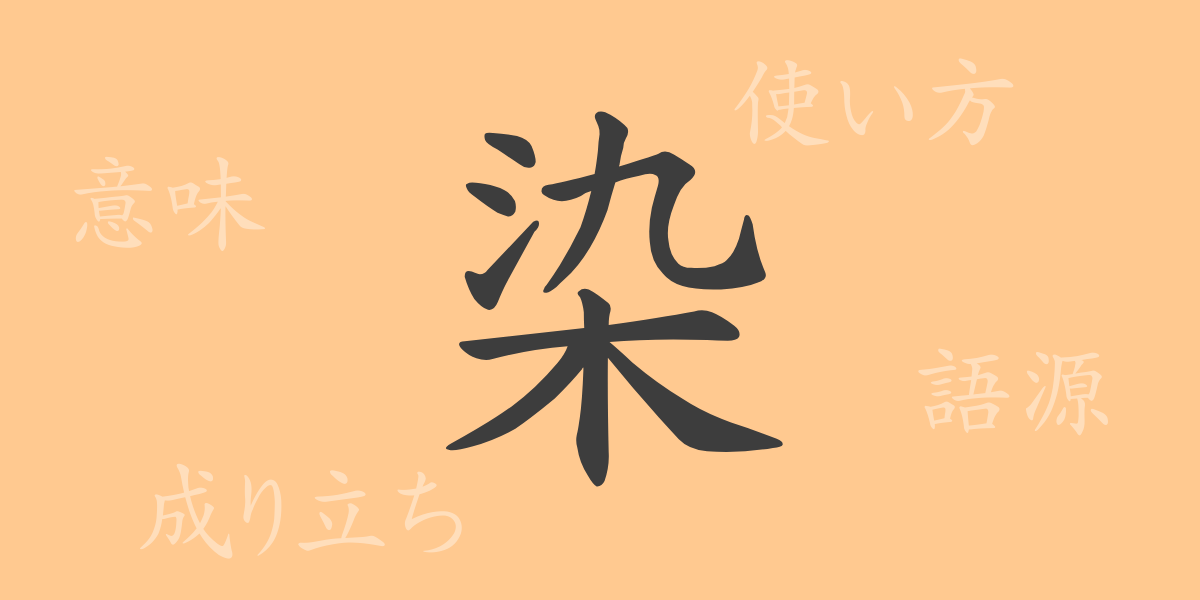Kanji, the essence of Japanese culture and language, embeds profound meanings and histories within each character, resonating deeply in daily life. This article focuses on the commonly used kanji “染” (せん), exploring its etymology, meanings, usages, and extending to idioms and proverbs, illuminating its charm. May this deepen your understanding of “染” and enhance your appreciation of Japanese linguistics.
Origins of 染
The kanji “染” originated in ancient China, initially symbolizing the act of dyeing fabrics. Composed of “氵” (さんずい), representing water, and “丹” (あかいろ), indicating the use of a tool in dyeing, it primarily conveyed the process of using water to dye items. Over time, “染” evolved beyond the literal act of dyeing to represent broader concepts of influence and emotional impact.
Meaning and Usage of 染
“染” carries meanings such as “to dye,” “to stain,” and “to influence.” It is used literally in contexts like “染める” (to dye), “汚染” (pollution), and figuratively in phrases like “風習に染まる” (to conform to customs). Moreover, it appears in expressions such as “心に染みる” (to resonate emotionally), illustrating its metaphorical applications.
Pronunciation, Stroke Count, and Radical of 染
Understanding the basic details of “染” is essential for grasping its applications:
- Pronunciation: On’yomi – セン, Kun’yomi – そ(める), し(みる), し(み)
- Stroke Count: 9 strokes
- Radical: 木偏 (きへん)
Phrases and Proverbs Involving 染
The kanji “染” is featured in numerous idioms, phrases, and proverbs, highlighting its cultural significance:
- 染色体 (せんしょくたい) – Chromosome, carrying genetic information.
- 感染症 (かんせんしょう) – Infectious disease, caused by pathogens.
- 洗染 (せんせん) – The process of washing and re-dyeing clothes.
- 染み付く (しみつく) – To become ingrained or habitual over time.
- 色に染まる (いろにそまる) – To be swayed by negative habits or trends.
Conclusion on 染
The kanji “染” is versatile, used in a variety of contexts within Japanese life, from material dyeing to metaphorical influences on the mind and habits. This exploration of “染” not only highlights its linguistic richness but also its deep-seated role in conveying both tangible and intangible aspects of Japanese culture. Hopefully, this deep dive enriches your understanding and appreciation of Japanese language nuances.

























